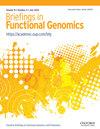Short-homology-mediated PCR-based method for gene introduction in the fission yeast Schizosaccharomyces pombe
IF 2.5
3区 生物学
Q3 BIOTECHNOLOGY & APPLIED MICROBIOLOGY
引用次数: 0
Abstract
Schizosaccharomyces pombe is a commonly utilized model organism for studying various aspects of eukaryotic cell physiology. One reason for its widespread use as an experimental system is the ease of genetic manipulations, leveraging the natural homology-targeted repair mechanism to accurately modify the genome. We conducted a study to assess the feasibility and efficiency of directly introducing exogenous genes into the fission yeast S. pombe using Polymerase Chain Reaction (PCR) with short-homology flanking sequences. Specifically, we amplified the NatMX6 gene (which provides resistance to nourseothricin) using PCR with oligonucleotides that had short flanking regions of 20 bp, 40 bp, 60 bp and 80 bp to the target gene. By using this purified PCR product, we successfully introduced the NatMX6 gene at position 171 385 on chromosome III in S. pombe. We have made a simple modification to the transformation procedure, resulting in a significant increase in transformation efficiency by at least 5-fold. The success rate of gene integration at the target position varied between 20% and 50% depending on the length of the flanking regions. Additionally, we discovered that the addition of dimethyl sulfoxide and boiled carrier DNA increased the number of transformants by ~60- and 3-fold, respectively. Furthermore, we found that the removal of the pku70+ gene improved the transformation efficiency to ~5% and reduced the formation of small background colonies. Overall, our results demonstrate that with this modified method, even very short stretches of homologous regions (as short as 20 bp) can be used to effectively target genes at a high frequency in S. pombe. This finding greatly facilitates the introduction of exogenous genes in this organism.基于短同源物介导的 PCR 方法在裂殖酵母中引入基因
在研究真核细胞生理学的各方面问题时,鼠李糖核酶是一种常用的模式生物。它被广泛用作实验系统的原因之一是其易于进行基因操作,利用天然的同源性靶向修复机制来精确地修改基因组。我们进行了一项研究,评估利用聚合酶链式反应(PCR)和短同源侧翼序列将外源基因直接导入裂殖酵母 S. pombe 的可行性和效率。具体来说,我们使用与目标基因侧翼区分别为 20 bp、40 bp、60 bp 和 80 bp 的寡核苷酸进行 PCR 扩增 NatMX6 基因(该基因对诺索三嗪具有抗性)。通过使用这种纯化的 PCR 产物,我们成功地将 NatMX6 基因导入了 S. pombe 的 III 号染色体 171 385 位。我们对转化程序进行了简单修改,使转化效率显著提高了至少 5 倍。根据侧翼区域的长度,目标位置的基因整合成功率在 20% 到 50% 之间。此外,我们还发现,加入二甲基亚砜和煮沸的载体 DNA 可使转化子的数量分别增加约 60 倍和 3 倍。此外,我们还发现去除 pku70+ 基因可将转化效率提高到约 5%,并减少小背景菌落的形成。总之,我们的研究结果表明,使用这种改进的方法,即使是很短的同源区段(短至 20 bp)也能有效地高频率靶向 S. pombe 中的基因。这一发现极大地促进了外源基因在该生物体内的引入。
本文章由计算机程序翻译,如有差异,请以英文原文为准。
求助全文
约1分钟内获得全文
求助全文
来源期刊

Briefings in Functional Genomics
BIOTECHNOLOGY & APPLIED MICROBIOLOGY-GENETICS & HEREDITY
CiteScore
6.30
自引率
2.50%
发文量
37
审稿时长
6-12 weeks
期刊介绍:
Briefings in Functional Genomics publishes high quality peer reviewed articles that focus on the use, development or exploitation of genomic approaches, and their application to all areas of biological research. As well as exploring thematic areas where these techniques and protocols are being used, articles review the impact that these approaches have had, or are likely to have, on their field. Subjects covered by the Journal include but are not restricted to: the identification and functional characterisation of coding and non-coding features in genomes, microarray technologies, gene expression profiling, next generation sequencing, pharmacogenomics, phenomics, SNP technologies, transgenic systems, mutation screens and genotyping. Articles range in scope and depth from the introductory level to specific details of protocols and analyses, encompassing bacterial, fungal, plant, animal and human data.
The editorial board welcome the submission of review articles for publication. Essential criteria for the publication of papers is that they do not contain primary data, and that they are high quality, clearly written review articles which provide a balanced, highly informative and up to date perspective to researchers in the field of functional genomics.
 求助内容:
求助内容: 应助结果提醒方式:
应助结果提醒方式:


